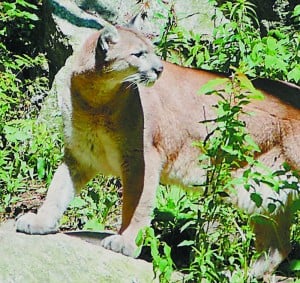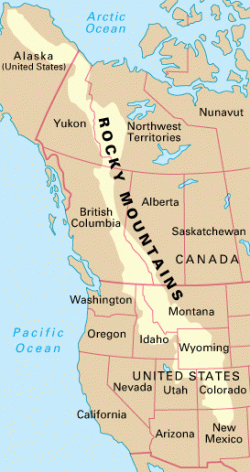Cattle Ranchers: Costa Rica's Conservationists
By Panthera's MesoAmerica Jaguar Coordinator, Roberto Salom-Pérez Contrary to what some people may think about the relationship between ranchers and jaguars in Central and South America, some of Panthera's most trusted partners in conservation are cattle ranchers.
Contrary to what some people may think about the relationship between ranchers and jaguars in Central and South America, some of Panthera's most trusted partners in conservation are cattle ranchers.This is particularly the case in Costa Rica where Panthera is working to protect the jaguar by partnering with local ranchers to mitigate human-jaguar conflicts. Our team's recent work with Marito Umaña, a local dairy farmer, to resolve a calf predation case is a prime example of the collaborative conservation work Panthera is carrying out with local communities in Costa Rica.
As a traditional dairy farmer, Marito (meaning small Mario) gets up very early each morning to milk his cows, and does this again in the afternoon before he travels the 4-5 km home on foot and by motorcycle. Recently, Marito shared with me that on a typical afternoon, as he was walking to his pasture to milk his cows, he noticed that the birds which normally sing so loud were uncharacteristically quiet. Marito explained that at that moment, he remembered that he had left his three young Jersey calves tied up in the pasture to be sure they wouldn't wander away and get lost.
 He then adjusted the milk tank on his shoulder and began to walk a bit faster; his dog, always attentive, did the same, but soon stopped and began to bark. As he walked through the pasture, Marito sadly came upon his three calves, then deceased, (photos left and below).
He then adjusted the milk tank on his shoulder and began to walk a bit faster; his dog, always attentive, did the same, but soon stopped and began to bark. As he walked through the pasture, Marito sadly came upon his three calves, then deceased, (photos left and below).Unfortunately, it is often assumed by local communities that jaguars are responsible for attacks on ranchers' livestock, like this one. However, after Marito contacted Panthera to investigate the scene the next morning, our team concluded that the three calves had been attacked by a cougar, or puma, rather than a jaguar.
 Although we couldn´t locate the typical bite marks on the calves, we did find that they were covered with grass, which is a predation characteristic only demonstrated by cougars. Our team then set up camera traps in the area in hopes of capturing images of the responsible cougar if it returned. These images would help Panthera monitor the cougar's movements if other attacks were to occur on nearby farms.
Although we couldn´t locate the typical bite marks on the calves, we did find that they were covered with grass, which is a predation characteristic only demonstrated by cougars. Our team then set up camera traps in the area in hopes of capturing images of the responsible cougar if it returned. These images would help Panthera monitor the cougar's movements if other attacks were to occur on nearby farms.See this Jaguar Predation Technical Manual for more details.

Later, we spoke with Marito to learn more about how he manages his farm and cattle, and details about any cases of predation that occurred in the past. Based on what Marito told me, we knew there were several simple methods that he could use to better protect his cattle. We shared 10 examples of these methods with Marito, taken from this Guide, 'General Recommendations for Coexistence between Wild Cats and Cattle.'
Also provided in Spanish.
As I've heard from many farmers in the area, Marito explained that he did not want to kill the cougar responsible for the attacks, but that because his farm is his livelihood, he cannot afford to sustain any further losses. Since Marito lives far from his farm and cannot move his most vulnerable cattle to a safer area near his home, we agreed that the best solution would be to build a predator-proof enclosure for his cattle, for which Marito would provide the wood and Panthera would supply the zinc roof plates. Our cat-cattle coexistence team, led by Daniel Corrales, was involved in a similar project last year to help build an enclosure on a farm in San Carlos where a jaguar had been attacking livestock. Since the building of the enclosure, this farm has had no further attacks and our team even found jaguar pugmarks, or foot prints, near the enclosure, confirming that the cat was still alive and unable to breach the corral!
Our cat-cattle coexistence team, led by Daniel Corrales, was involved in a similar project last year to help build an enclosure on a farm in San Carlos where a jaguar had been attacking livestock. Since the building of the enclosure, this farm has had no further attacks and our team even found jaguar pugmarks, or foot prints, near the enclosure, confirming that the cat was still alive and unable to breach the corral!Read the newsletter story about this enclosure, 'Panthera's Guide to Building a Livestock Corral.'
 Several days later, we retrieved images from the camera traps and confirmed the identity of the attacker – a cougar, featured in the photo to the left. The other images we obtained gave us a fascinating look at the other species, including coyotes and vultures, that typically scavenge on victims of predation after the attacker has left.
Several days later, we retrieved images from the camera traps and confirmed the identity of the attacker – a cougar, featured in the photo to the left. The other images we obtained gave us a fascinating look at the other species, including coyotes and vultures, that typically scavenge on victims of predation after the attacker has left.Our team has since showed these images to Marito and advised him to bury or burn any future predation victims in order to help discourage coyotes and other scavengers from attacking his livestock, and to prevent the spread of disease to other cattle.
See additional camera trap photos here.
As we work to build Marito's new livestock enclosure, the Panthera Costa Rica team is testing additional strategies that may prevent further attacks from big cats on livestock, and we hope to soon have successful solutions to share. Regardless, Panthera absolutely needs the help of local conservation-minded cattle ranchers to dually protect their livelihoods and the jaguar with which they share their homes. Marito's efforts to inform and devise a solution to the problem with Panthera, rather than seeking immediate retaliation (potentially on a jaguar), shows that human-jaguar conflicts in Costa Rica can be mitigated.
This case also demonstrates the positive and reliable reputation that Panthera has earned through years of community-based work as the go-to wild cat conservation organization in Costa Rica. The Panthera Costa Rica team would like to give a special thanks to Marito and all the conservationist-cattle ranchers that are working to ensure that ranching and jaguar conservation coexists.
Learn more about Panthera's work in Costa Rica and other jaguar range states through the Jaguar Corridor Initiative.
Visit the Panthera Costa Rica website in Spanish.
Read the Technical Manual - "People and Jaguars: A Guide for Coexistence"





















